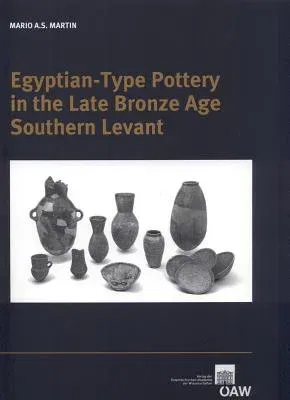This volume presents a group of Late Bronze Age (ca. 1500-1130 BCE;
18th-20th Egyptian Dynasties) ceramics in the southern Levant that can
be linked to the Egyptian pottery tradition (imported and locally
produced). It should be of interest to scholars dealing with the Late
Bronze Age in the Eastern Mediterranean in general, and with the
Egyptian impact in the southern Levant in particular. The volume is
divided into four main parts: Part I provides the reader with a typology
of the relevant Egyptian forms. Part II explores the technological
traits of the material under review, including fabric analyses, as well
as formation techniques. Part III is a site by site presentation of the
Egyptian assemblages to offer a broad canvas of the phenomenon under
review (mainly Beth-Shean, Megiddo, Tell es-Sa'idiyeh, Tel Dor, Tel
Aphek, Tel Mor, Ashkelon, Tell el-'Ajjul, Deir el-Balah, Lachish, Tel
Sera' and Tell el-Far'ah [South]). Part IV presents a concluding
discussion. Among other issues it collates a combined chronological
framework, an analysis of the repertoire and function of the Egyptian
assemblages and a reflection on the role of (locally-made)
Egyptian-style pottery as ethnic marker. The volume closes with 68
plates, showing drawings of the vessels discussed throughout the study.
A number of authors contributed chapters on various issues. This is the
first time that a full, complex picture is presented on the reviewed
topic. The two cardinal issues concern (1) the nature of the Egyptian
involvement in Late Bronze Age Canaan in general and in Ramesside Canaan
in particular (keywords: ethnicity, direct rule versus elite emulation),
on which the Egyptian-type pottery sheds light; (2) the chronological
value of the reviewed ceramic shapes, many of which function as sensible
chronological markers and, in combination with Aegean and Cypriot
imports, allow for a refined chronological framework, including
revisions of traditional dating.

